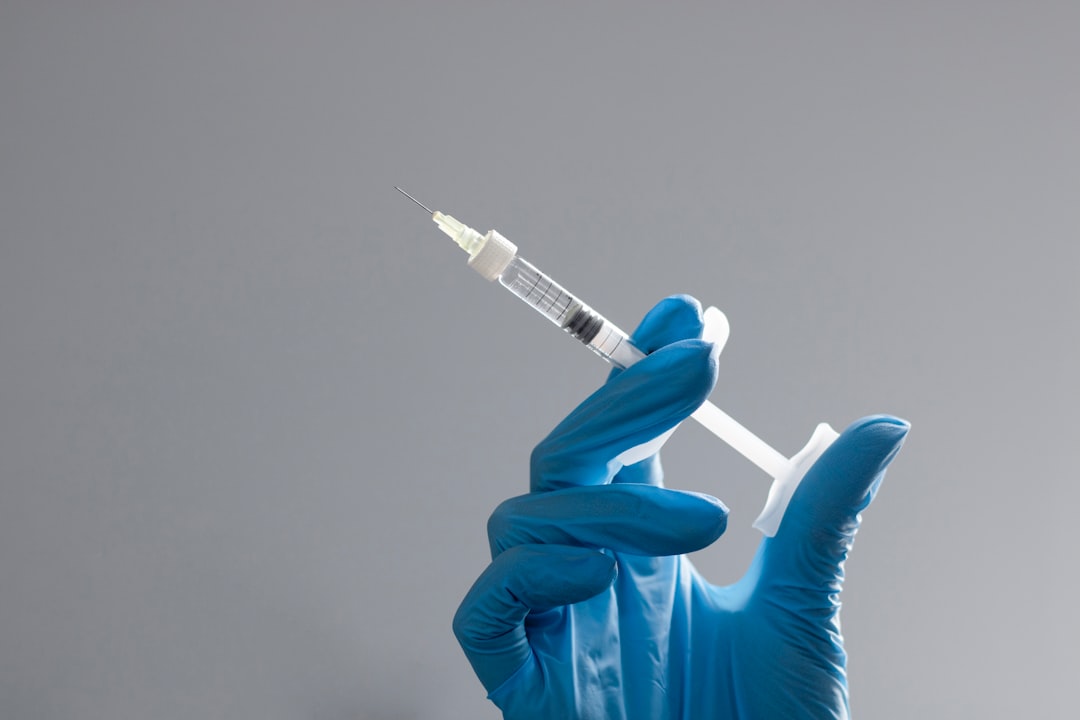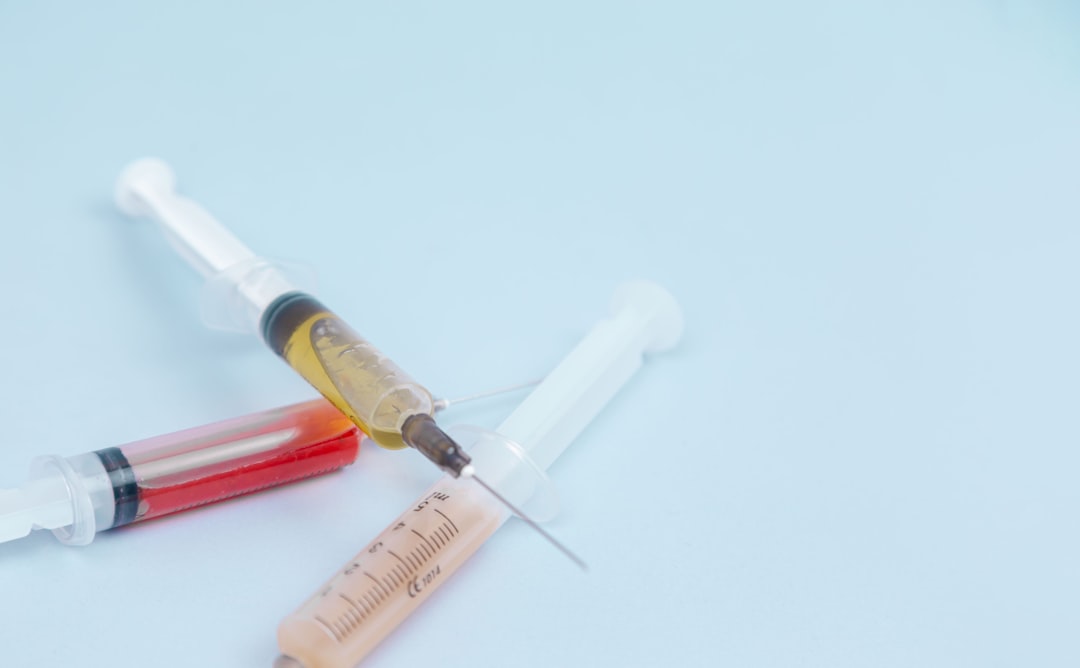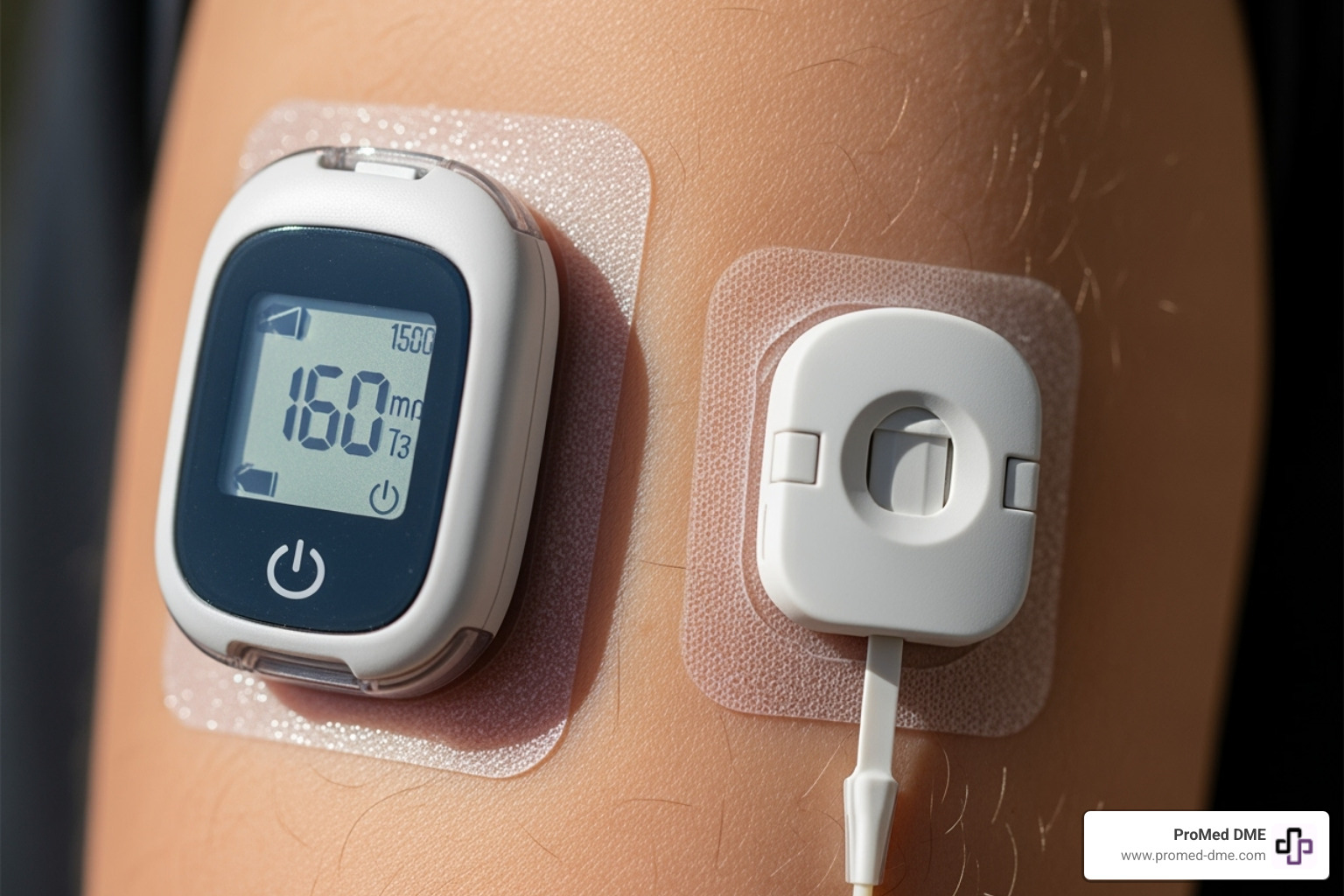Your Step-by-Step Guide to Medicare Coverage for CGMs

Explaining Medicare Coverage for Your CGM
Managing diabetes can often feel like a full-time job filled with questions and uncertainty. Are your levels too high? Too low? What effect did that meal really have? A Continuous Glucose Monitor (CGM) is a transformative technology that replaces the guesswork and dozens of daily finger-pricks with a constant stream of painless, real-time data. This gives you and your care team a complete picture of your glucose patterns, helping you spot trends, understand your body's responses, and act quickly to stay in a healthy range. The best news? Recent changes to Medicare policy mean that CGMs are now covered for many more people with diabetes than ever before. This comprehensive guide is designed to walk you through the updated rules, necessary paperwork, and expected timelines. Our goal is to help you move confidently from asking, “Can I get one?” to knowing, “Mine is on the way,” all with the expert support of the team at ProMed DME.
CGM vs. Traditional Finger-Prick Monitoring
To understand the value of a CGM, it's helpful to compare it to traditional blood glucose meters (BGMs).
Traditional BGM (Finger-Prick): This method gives you a single glucose reading at one specific moment in time. It’s like taking a single photograph of a moving car. You know where it is right now, but you don’t know how fast it’s going or in which direction. You might test before a meal and see a good number, but you miss the spike that happens an hour later.
Continuous Glucose Monitor (CGM): A CGM provides a dynamic, continuous stream of data, taking readings every few minutes. This is like having a video of the car. You not only see your current glucose number but also a trend arrow showing whether your levels are rising, falling, or stable—and how quickly. This allows you to see the entire story of your glucose levels, including overnight trends, post-meal spikes, and the impact of exercise, stress, and medication. This wealth of information empowers you to make proactive decisions for better control and greater peace of mind.
Understanding CGMs and What Medicare Covers
A Continuous Glucose Monitor is a sophisticated yet easy-to-use system that automatically tracks your glucose levels every few minutes, 24 hours a day. Instead of seeing isolated numbers from finger-pricks, you get a continuous data stream that reveals the full story of how your body responds to meals, exercise, stress, and medication. This allows you to identify patterns, prevent severe highs and lows, and spend more "time in range"—the percentage of time your glucose levels stay within a target healthy zone, which is a key indicator of well-managed diabetes.
Under its guidelines, Medicare Part B classifies a specific type of CGM, known as a "therapeutic CGM," as Durable Medical Equipment (DME). This is the same category as items like walkers or oxygen equipment. When you meet the eligibility criteria, Medicare will typically cover 80% of the cost for the core components of the system:
- Receiver: This is a dedicated, hand-held display device that shows your glucose readings. Under Medicare rules, the receiver (or an integrated display on a Medicare-covered insulin pump) is the official piece of DME. Even if you prefer using a smartphone app, you must get and use the receiver for coverage.
- Sensors: These are the disposable patches you wear on your body, typically on the back of the arm or the abdomen. Each sensor has a tiny, flexible filament that sits just under the skin to measure glucose in the interstitial fluid. They are typically worn for 10 to 14 days before being replaced.
- Transmitters: This is the reusable component that clips onto the sensor. It wirelessly sends the glucose data from the sensor to your receiver or smartphone. Transmitters have a battery life of several months and are replaced periodically.
To ensure you never run out of these essential items, Medicare also covers an ongoing supply allowance. This means that once you are approved, a DME supplier like ProMed DME will ship your replacement sensors and transmitters to you on a regular schedule, ensuring you have what you need for uninterrupted monitoring.
What a CGM System Looks Like
- Sensor: A small, water-resistant patch with a tiny filament that painlessly inserts just under the skin.
- Transmitter: A small, durable device that snaps onto the sensor and wirelessly broadcasts your glucose readings.
- Receiver or app: A dedicated device or a smartphone app that displays your current glucose number, trend arrows indicating direction and speed of change, and historical data graphs.
For the most current official details, you can always visit the official Medicare page: Continuous glucose monitors - Medicare
Are You Eligible? Medicare’s Rules in Plain English
In a significant update effective April 16, 2023, the Centers for Medicare & Medicaid Services (CMS) greatly expanded coverage for therapeutic CGMs. This change makes this life-changing technology accessible to a much broader group of people with diabetes. To qualify for Medicare coverage, you must meet a set of specific criteria. Let's break them down in simple terms.
You are eligible when all of the following conditions are met:
You have a documented diagnosis of diabetes. This can be Type 1, Type 2, or another form of diabetes (e.g., secondary to pancreatitis or cystic fibrosis). The key is that the diagnosis is officially recorded in your medical chart by your treating physician.
Your doctor prescribes an FDA-cleared therapeutic CGM. Your doctor must not only write the prescription but also document in your chart that a CGM is medically necessary for your treatment. They must also confirm that you (or a designated caregiver) have received proper training on how to use the device.
You meet one of the following treatment conditions:
- You use any type of insulin. This is the most significant change in the new rules. It no longer matters how much insulin you take or how often. Coverage is available if you take long-acting (basal) insulin once a day, rapid-acting (bolus) insulin with meals, use an insulin pump, or follow any other insulin regimen.
- You have a history of "problematic hypoglycemia." This applies to individuals who may not use insulin but still experience dangerous low blood sugar events. To qualify under this rule, your medical records must document one of the following:
- Two or more Level 2 hypoglycemic events: These are lows with a glucose reading below 54 mg/dL that continue to occur despite adjustments to your diabetes treatment plan.
- One Level 3 hypoglycemic event: This is a severe low (glucose < 54 mg/dL) where you were so disoriented or incapacitated that you required assistance from another person to treat it.
Required Doctor Visits for Ongoing Coverage
Medicare needs to see that the CGM is being actively used as part of your medical care. To ensure this, there are two key visit requirements:
- Initial Visit: You must have a face-to-face or approved telehealth appointment with your prescribing doctor within the six months before they order your CGM.
- Follow-up Visits: You must continue to see your doctor at least once every six months after you start using the CGM. During these visits, your doctor will review your CGM data, assess your progress, and make any necessary adjustments to your overall treatment plan.
These regular check-ins are crucial because they provide the documentation Medicare needs to confirm that the CGM remains medically necessary for you. You can read the full policy details directly from CMS here: CMS Coverage Criteria.
How Can I Get Medicare to Pay for a CGM? A 4-Step Checklist
Navigating the requirements for Medicare coverage can seem daunting, but it becomes much simpler when you break it down into a clear, step-by-step process. Follow this checklist to ensure you have everything in order.
1. Meet With Your Doctor to Discuss a CGM
Your journey begins with a conversation with your endocrinologist or primary care physician. Be prepared for this appointment. Explain the specific challenges you face with managing your diabetes, such as frequent highs or lows, anxiety about hypoglycemia (especially overnight), or difficulty understanding how food and activity affect you. If you meet the eligibility rules outlined above, your provider can write a prescription and, most importantly, create detailed notes in your medical record that document the medical necessity for a CGM.
2. Ensure All Paperwork Is Complete and Accurate
This is the most critical step where delays often happen. Medicare requires a specific set of documents from your doctor's office before a supplier can provide you with a CGM. This packet must include your formal diabetes diagnosis, a clear record of your insulin use or history of problematic hypoglycemia, and confirmation that you've been trained on the device. It also requires a formal document called a Written Order Prior to Delivery (WOPD). This is the official prescription. To avoid back-and-forth, ask your clinic to include the clinical notes from your recent face-to-face or telehealth visit that support the prescription. An experienced DME supplier like ProMed DME can work directly with your doctor's office to help gather this essential documentation.
3. Choose a Medicare-Approved CGM System
Not every CGM system on the market is configured for Medicare coverage out of the box. The key requirement is that the system must be ordered with its own stand-alone DME receiver (or be integrated with a Medicare-covered insulin pump). Popular and highly effective systems like the Dexcom G6/G7 and the Abbott FreeStyle Libre 2/3 all qualify for coverage when they are ordered with their compatible reader device. While you are free to use the convenient smartphone app for day-to-day viewing of your data, you must retain and use the receiver at least periodically to maintain compliance with Medicare's rules.
4. Partner With a Medicare-Enrolled DME Supplier
Finally, you must get your CGM from a supplier that is enrolled with Medicare and agrees to “accept assignment.” This is a crucial financial point. Accepting assignment means the supplier agrees to the Medicare-approved price for the equipment and will only bill you for your standard deductible and coinsurance. A supplier that does not accept assignment could charge you much more. ProMed DME is a fully-enrolled Medicare supplier that accepts assignment. Our team will:
- Contact your insurance to verify your specific benefits and out-of-pocket costs.
- Work directly with your doctor's office to collect all the necessary paperwork.
- Bill Medicare on your behalf, handling the complex claims process.
- Ship your initial system and all ongoing supplies directly to your door with free shipping and provide support from our on-staff nurse to answer your questions.

Understanding Your Potential Out-of-Pocket Costs
While Medicare provides significant financial assistance for CGMs, it's important to understand that "covered" does not always mean "free." Your final out-of-pocket costs will depend on your specific Medicare plan. Let's look at the most common scenarios.
Original Medicare (Part B)
If you have Original Medicare, your CGM and supplies will be covered under Part B as Durable Medical Equipment (DME). Here’s how the costs typically work:
- Part B Deductible: First, you must pay your annual Part B deductible. For 2024, this amount is $240. This amount is set by Medicare each year and may change. You are responsible for 100% of your Medicare-approved costs until this deductible is met.
- Coinsurance: After your deductible is met, Medicare pays 80% of the Medicare-approved amount for your CGM receiver, transmitters, and sensors. You are responsible for the remaining 20% coinsurance.
- The Importance of "Accepting Assignment": It is vital to use a DME supplier, like ProMed DME, that "accepts assignment." This means we agree to accept the Medicare-approved amount as full payment. Your 20% share is calculated from this capped price. Suppliers who don't accept assignment can charge you more than the Medicare-approved amount.
- Supplemental (Medigap) Plans: If you have a Medigap plan, it may cover your 20% coinsurance, potentially reducing your out-of-pocket cost to $0 after your deductible is met. Check your specific Medigap policy for details on Part B coinsurance coverage.
Medicare Advantage (Part C)
Medicare Advantage plans are offered by private insurance companies and are required to cover everything that Original Medicare covers. Therefore, they must cover therapeutic CGMs if you meet the eligibility criteria. However, your costs may be different:
- Varying Costs: Instead of a 20% coinsurance, your plan may have a flat-dollar copayment for DME. Deductibles and out-of-pocket maximums also vary widely from plan to plan.
- Provider Networks: Most Medicare Advantage plans have provider networks. You will likely need to use a DME supplier that is "in-network" with your plan to get the lowest costs. Using an out-of-network supplier could result in much higher bills or no coverage at all.
The best way to know your exact costs is to check your plan's documents or call your insurance provider. The team at ProMed DME can also help by performing a detailed benefits verification for you.

Preguntas frecuentes
What if Medicare denies my CGM claim?
Don't panic. A denial is often due to a simple paperwork issue, like a missing signature or incomplete medical notes. The first step is to get a copy of the official denial letter, which will state the reason. Work with your doctor and your DME supplier (like ProMed DME) to correct the missing information. You have the right to file an appeal, and many initial denials are overturned with proper documentation. If you ultimately do not qualify, ask your doctor about manufacturer discount programs or using a short-term "professional CGM" in the clinic to gather data that might support a future request.
Do I really need a separate reader if I use my phone?
Yes, for Medicare coverage, this is non-negotiable. Medicare's rules classify the CGM system under the Durable Medical Equipment (DME) benefit. The dedicated receiver (or reader) is the component that officially meets the DME definition. Your smartphone is not considered DME. Therefore, to get coverage, the prescription must include the reader, and it must be shipped to you. You should use it at least once a month to download data to ensure compliance. For all other times, you are free to use your preferred smartphone app to view your glucose levels.
Does the type of diabetes matter for coverage?
No. The Medicare coverage criteria are based on your treatment regimen and clinical history, not the specific type of diabetes you have. Whether you have Type 1, Type 2, LADA, or diabetes resulting from another condition, you can qualify as long as you meet the requirements related to insulin use or problematic hypoglycemia.
What is the difference between a therapeutic and non-therapeutic CGM?
A therapeutic CGM is one that is FDA-cleared to be used for making treatment decisions—like taking a dose of insulin—without needing a confirmatory finger-prick test. Medicare only covers these therapeutic CGMs. Non-therapeutic, or "adjunctive," CGMs are meant to supplement, but not replace, finger-prick testing for treatment decisions. The most popular systems available today, like Dexcom and FreeStyle Libre, are therapeutic CGMs.
How often will I receive my CGM supplies?
Once you are approved, you will be set up on a recurring resupply schedule based on Medicare's guidelines and the specific CGM system you use. For example, sensors are typically worn for 10-14 days, so you will receive a 90-day supply (enough sensors to last for three months) in each shipment. Transmitters last longer (typically 3 months or more) and will be included in your shipments as needed. ProMed DME manages this schedule for you and ships your supplies automatically so you don't have to worry about running out.
Your Partner in Diabetes Management
The expanded Medicare rules have opened the door for millions of Americans with diabetes to access the powerful benefits of a CGM. This technology can lead to better glucose control, fewer dangerous hypoglycemic events, and invaluable peace of mind. However, understanding the specific criteria and navigating the required paperwork can feel like a significant hurdle.
This is where ProMed DME makes the difference. We believe that accessing essential medical supplies should be simple and stress-free. Our team of experts specializes in the Medicare process for CGMs. We act as your advocate and coordinator, simplifying every step along the way.
We will:
- Coordinate Directly with Your Doctor: We take the burden off you by working with your physician's office to ensure all prescriptions and medical documentation are complete and accurate.
- Handle All Insurance and Billing: Our specialists will verify your benefits, submit all claims to Medicare, and handle the billing process from start to finish.
- Provide Reliable, Free Shipping: Your CGM system and all subsequent supplies are shipped directly to your home, nationwide, with no shipping charges.
- Offer Clinical Support: Have a question about your device? Our dedicated on-staff nurse is available to provide guidance and support when you need it.
Don't let administrative problems stand between you and better diabetes management. Let our team guide you—step by step—from your initial inquiry to the moment your CGM arrives at your door.
Ready to take control and put a CGM to work for you? Visit https://www.promed-dme.com/ to get started today and find the peace of mind that comes with having an expert partner on your side.
Recursos y artículos relacionados
Manténgase informado con las entradas de nuestro blog informativo.
Descubra las ventajas de ProMed
y pruebe nuestros productos
Ofrecemos envío gratuito y un legendario servicio de atención al cliente para garantizar que reciba los
mejores productos de DME para sus necesidades.



